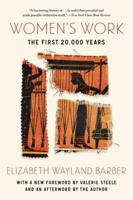Publisher's Synopsis
As pioneering hunter-gatherer populations moved into unfamiliar regions, they faced the challenge of locating critical resources like food, water, and raw materials for tools, shelter, and clothing. While their descendants would eventually benefit from the accumulation of this knowledge over time, these first colonizers were forced to learn a new landscape from scratch. In Landscape Learning in the Pleistocene Great Basin, David B. Hunt proposes a quantitative model to explain the adaptive behaviors of the first groups of humans to settle in a particular area, a concept known as "landscape learning."
Hunt seeks insight into the initial development of adaptive strategies related to the procurement of essential resources within a region. Incorporating data from archaeological investigation at the Old River Bed Delta in Utah and focusing specifically on the lithics recovered, Hunt develops what he terms the Discoverability Model. He proposes this model as a way for archaeologists to begin quantifying the qualitative aspects of colonization and landscape learning models.








